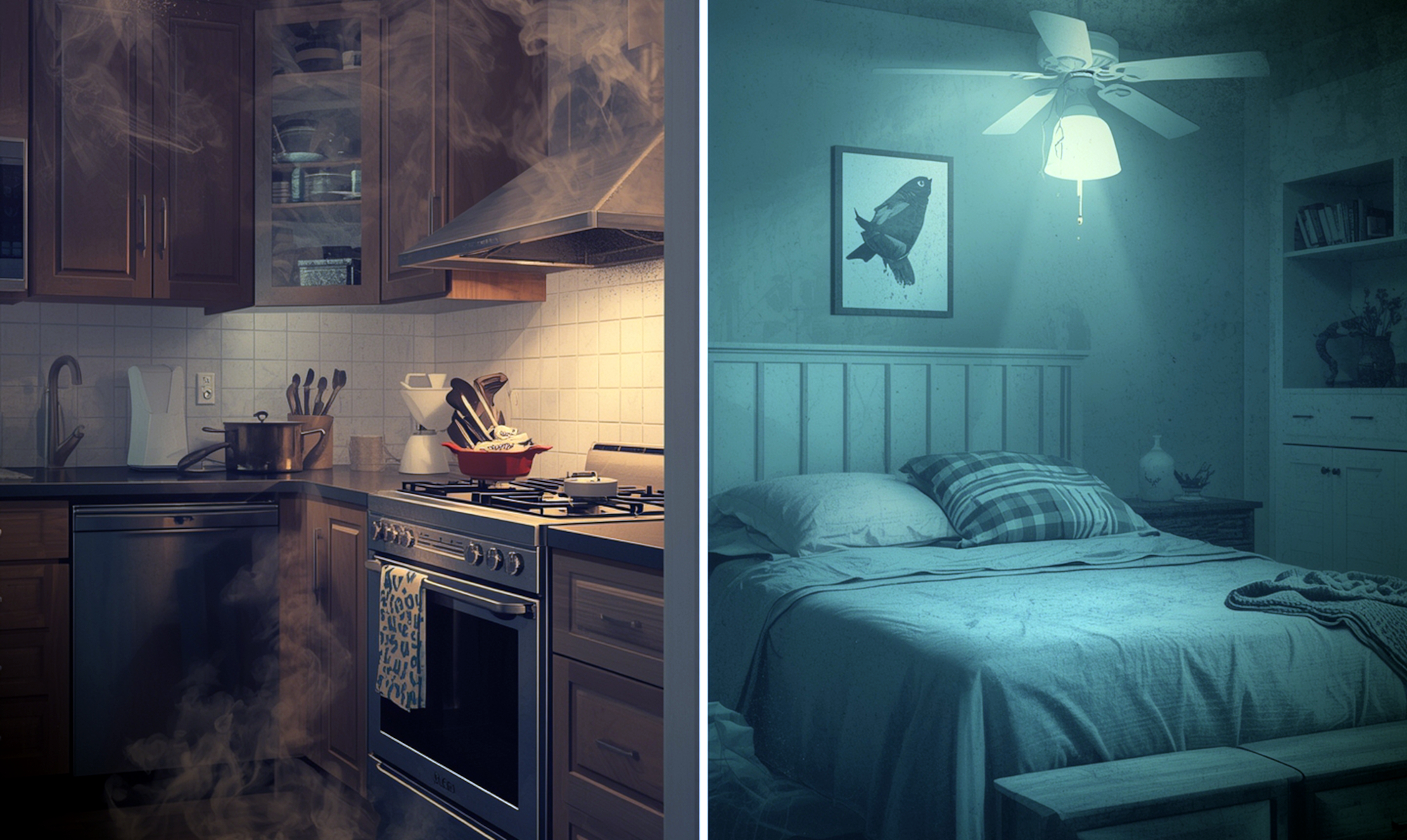
What Is Indoor Air Pollution?
Indoor air pollution refers to the presence of harmful substances within indoor environments, often resulting from various sources like cooking, heating, cleaning products, and building materials. Prolonged exposure to these pollutants can lead to a range of health issues, including physical and cognitive issues, contributing to the phenomenon known as “Sick Building Syndrome” (SBS). Symptoms include headaches, dizziness, fatigue, irritation of the eyes, nose, and throat, and difficulty concentrating.
High levels of carbon dioxide (CO₂) in enclosed spaces are associated with drowsiness, reduced cognitive performance, and disrupted sleep cycles. Radon, a naturally occurring radioactive gas, is another indoor hazard and is considered the second leading cause of lung cancer after smoking. Additionally, pollutants like volatile organic compounds (VOCs), particulate matter (PM), and nitrogen dioxide (NO₂) can exacerbate respiratory conditions, allergies, and cardiovascular problems.
Understanding and monitoring indoor air quality is therefore crucial for maintaining health, productivity, and overall well-being.

Pollutants and Their Effects
The most common indoor pollutants include:
- Carbon Dioxide (CO₂): High concentrations cause fatigue, impaired decision-making, headaches, and sleep disturbances.
- Radon: Radioactive gas that increases the risk of lung cancer over long-term exposure.
- Particulate Matter (PM1, PM2.5, PM10): Fine particles from cooking, dust, or smoking can penetrate deep into the lungs, aggravating asthma and cardiovascular disease.
- Volatile Organic Compounds (VOCs): Emitted from paints, cleaning products, furniture, and building materials; can trigger irritation, headaches, and long-term organ damage.
- Carbon Monoxide (CO): A toxic gas produced by combustion appliances; exposure can cause nausea, confusion, and, in severe cases, death.
- Nitrogen Dioxide (NO₂) and Ozone (O₃): Respiratory irritants that exacerbate asthma and decrease lung function.
Indoor air pollution is complex because multiple pollutants often co-exist, and their effects are cumulative over time. Continuous monitoring is the key to prevention.
How uRADMonitor Sensors target Indoor Pollution
uRADMonitor offers a wide range of products that cover almost all possible harmful factors in almost all usage scenarios. Some of these are designed for both residential and commercial indoor environments. The products can help detect, quantify and mitigate indoor pollution risks as follows:
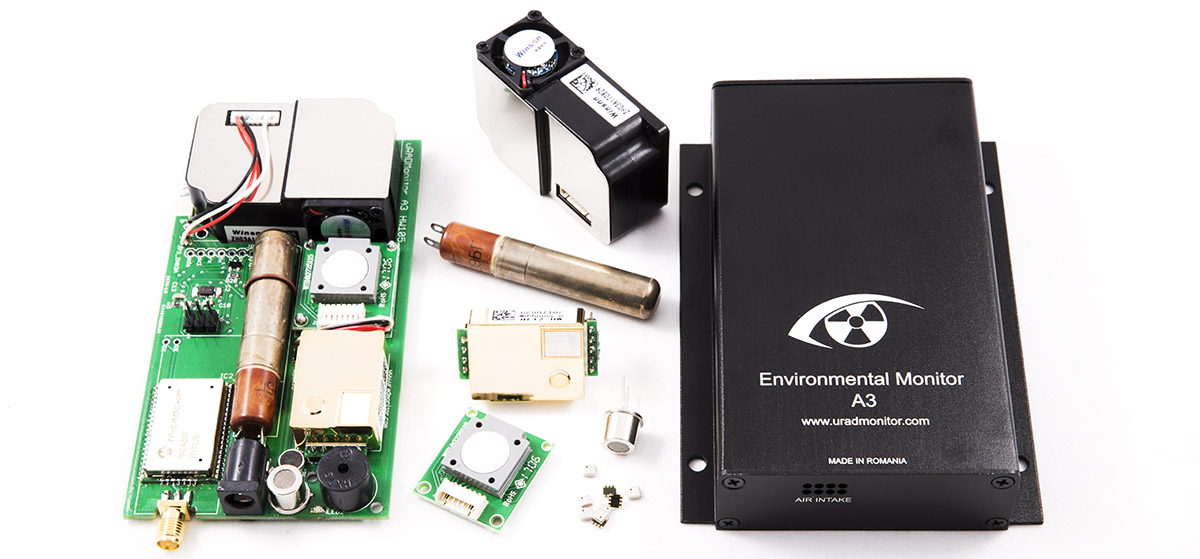
uRADMonitor MODEL A3
- Sensors included: PM1, PM2.5, PM10, CO, NO₂, O₃, VOCs, temperature, humidity, air pressure and noise.
- Application: Monitors fine particulate matter and toxic gases simultaneously. Ideal for workplaces, classrooms, and homes where multiple pollutants are present and have to be monitored.
- Use for symptoms: Helps identify high PM and CO₂ levels to reduce respiratory issues, headaches, and SBS symptoms.
The uRADMonitor MODEL A3 is certified by AQSPEC-AQMD US, INCD-ECOIND Romania, AIRLAB 2021, AIRLAB 2023 and now pending AIRLAB 2025 certification.
uRADMonitor MODEL SMOGGIE-PM
- Sensors included: PM1, PM2.5, PM10, temperature, humidity, air pressure
- Application: Focused on particulate matter detection for environments with dust, smoke, or other airborne particles. Will detect smoke from cooking and particulate matter with great accuracy.
- Use for symptoms: Reduces respiratory and cardiovascular risks linked to airborne particles.
The uRADMonitor MODEL SMOGGIE is certified by AQSPEC-AQMD US, AIRLAB 2021, AIRLAB 2023 and now pending AIRLAB 2025 certification. It was one of the Winners of AIRLAB 2021 and 2023.
uRADMonitor MODEL SMOGGIE-CO2
- Sensors included: CO₂, temperature, humidity
- Application: Monitors carbon dioxide levels, ventilation efficiency, and indoor air freshness.
- Use for symptoms: Mitigates drowsiness, cognitive impairment, and sleep disturbances caused by CO₂ buildup.
SMOGGIE-CO2 was used in multiple studies targeting schools and students, as CO2 can affect cognitive abilities. It is certified by AIRLAB 2021 and AIRLAB 2023.
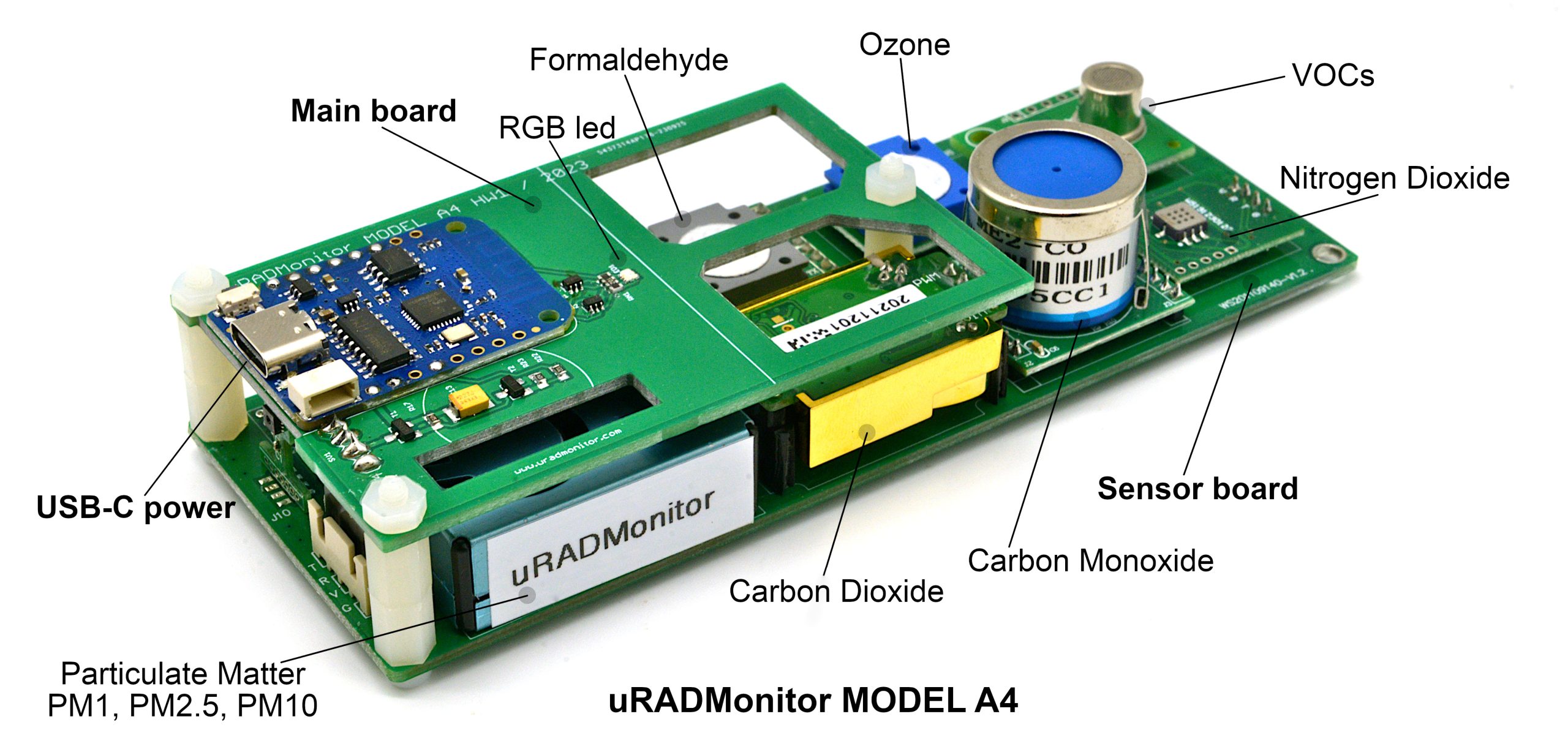
uRADMonitor MODEL A4
- Sensors included: PM, CO, NO₂, O₃, VOCs, CO₂, temperature, humidity
- Application: High-end, multi-parameter indoor air quality monitoring with comprehensive detection of chemical and particulate pollutants.
- Use for symptoms: Detects VOCs, particulate matter, and toxic gases to prevent long-term health risks, including respiratory, cardiovascular, and cancer-related issues.
By combining the appropriate uRADMonitor sensors, one can monitor almost all major indoor air quality threats: particulate pollution, toxic gases, CO₂ accumulation, and VOC exposure. It is one of our newer products and now pending AIRLAB 2025 certification.
uRADMonitor MODEL seeRADON
- Sensors included: Radon,temperature, humidity, barometric pressure
- Application: Advanced indoor Radon monitoring with real time data output
- Use for symptoms: Detect radon to prevent long-term health risks such as pulmonary cancer-related issues.
Conclusions: Technology for a Healthier Modern Lifestyle
Indoor air quality monitoring is no longer a luxury , it is a cornerstone of a healthy, informed lifestyle. uRADMonitor is here to help you with:
- Real-time awareness of indoor pollutants and air quality trends. You learn very quickly what are the major risks in your home and thanks to constant monitoring, you understand their sources and evolution.
- Evidence-based actions for ventilation, filtration, and space usage. You see the data and can act on it to protect your health.
- Prevention of Sick Building Syndrome symptoms and chronic exposure risks. Are you sure your building is safe? How can you know without measuring it?
- Empowerment of building occupants and managers to make data-driven decisions
With affordable, precise, and reliable sensor technology, households, offices, schools, and public institutions can now ensure cleaner air, better sleep, enhanced cognitive performance, and long-term well-being. uRADMonitor products offer a practical solution for modern indoor living, combining scientific rigor with actionable insights for healthier spaces. We have multiple lab-certified products that can answer all your questions, in real time.
Moreover, we are committed to advancing scientific understanding by leveraging the extensive data collected by our global network of sensors, in collaboration with leading universities worldwide, to study indoor air pollution and its impact on human health, and to develop effective mitigation strategies. See some of the uRADMonitor research papers here.
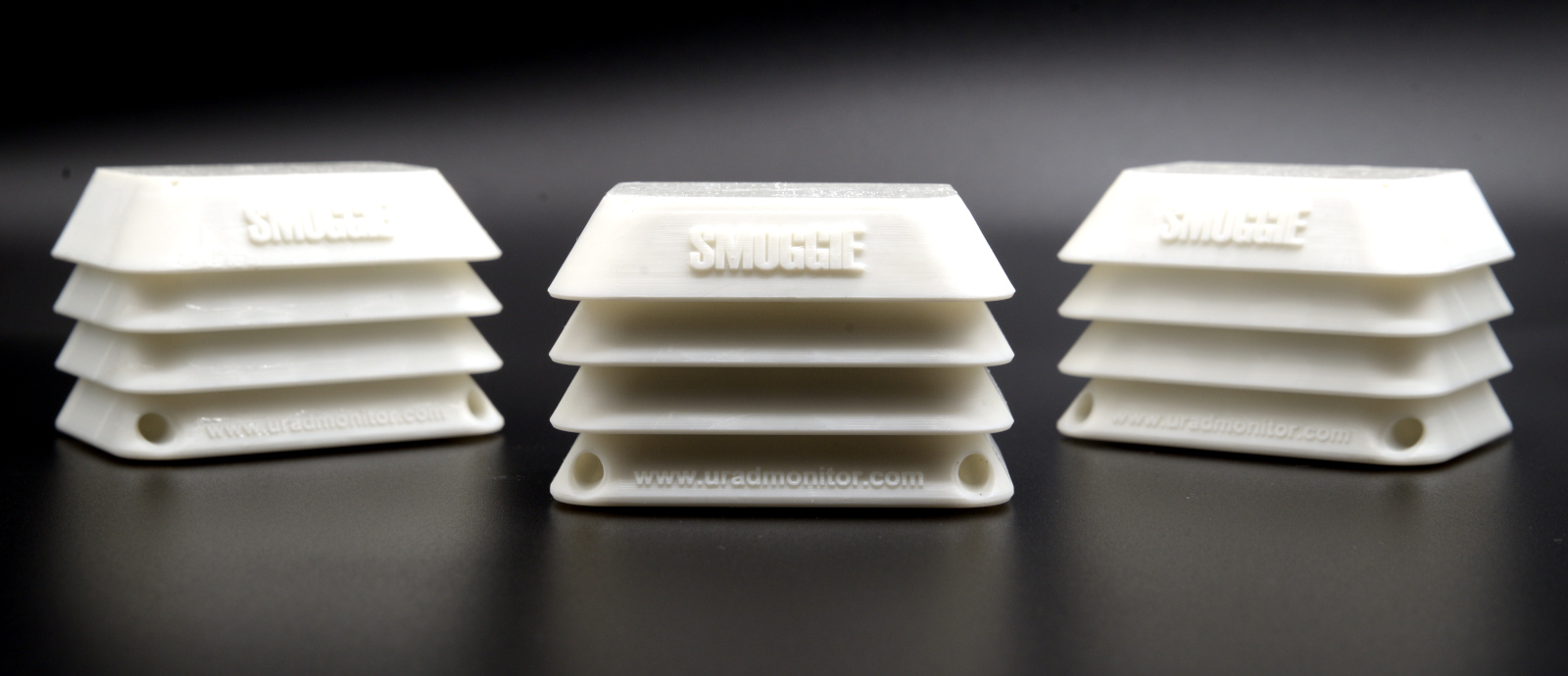
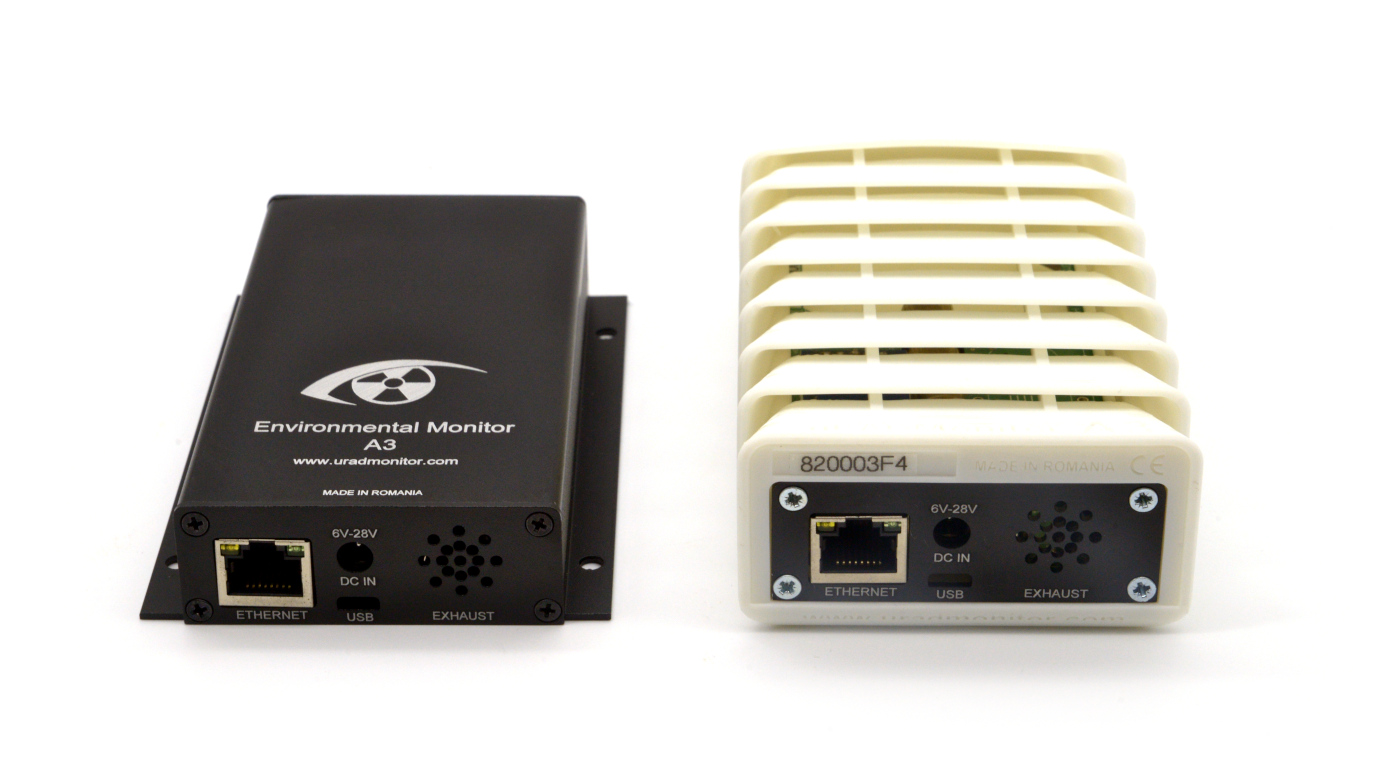


codemore code
~~~~